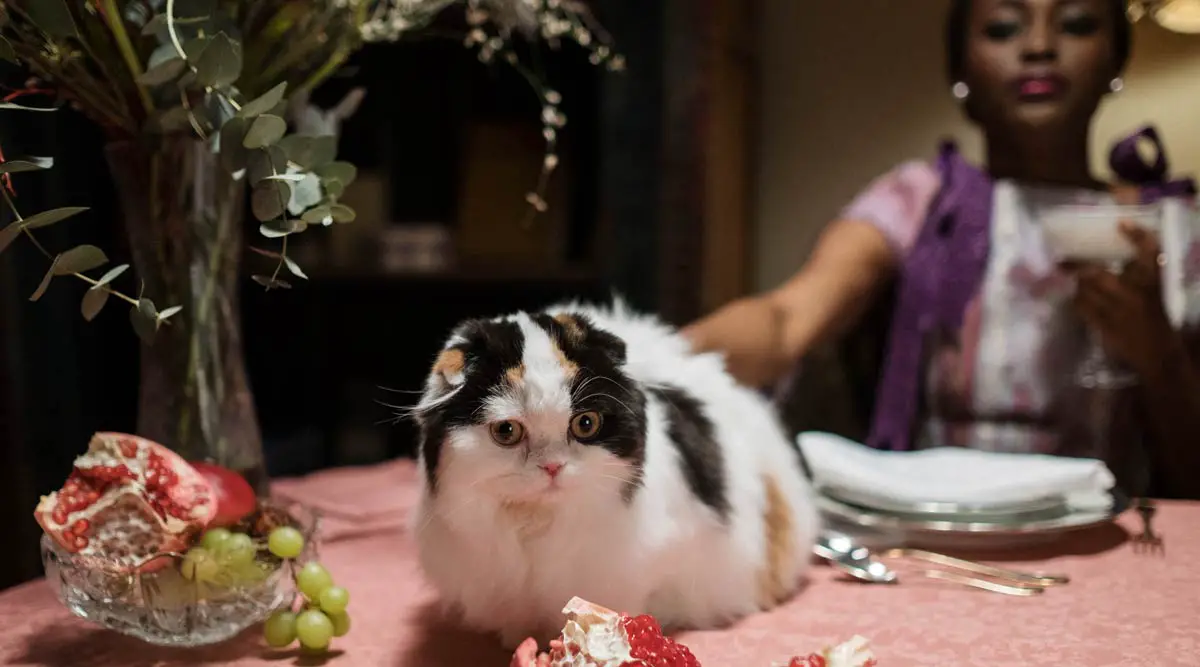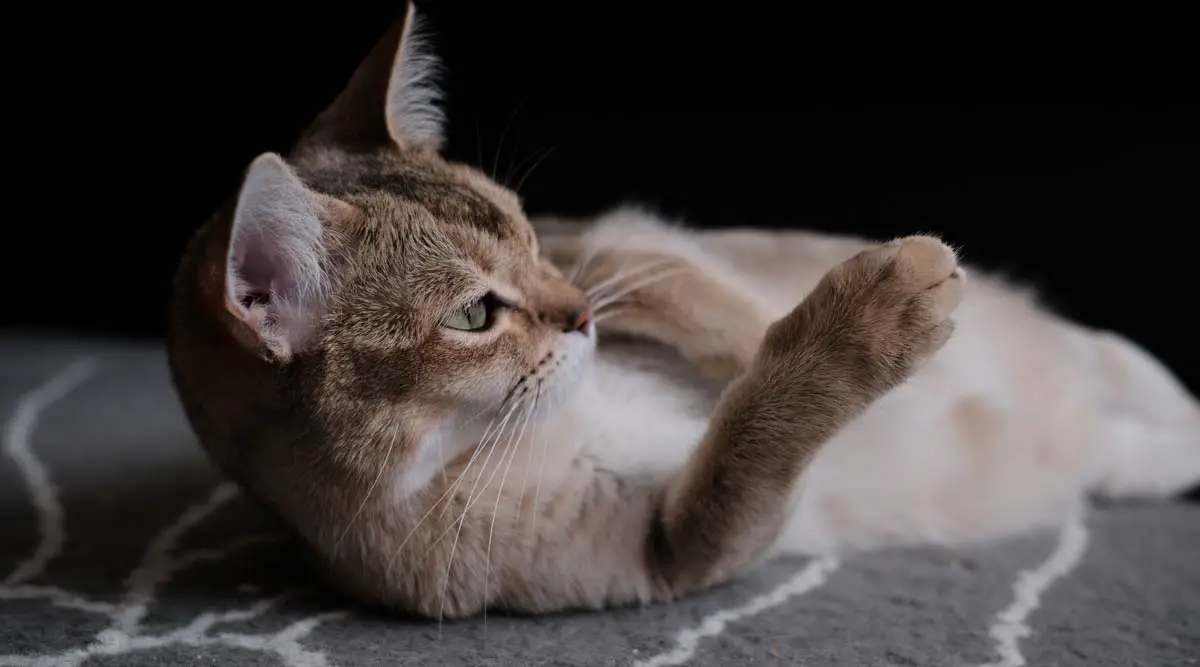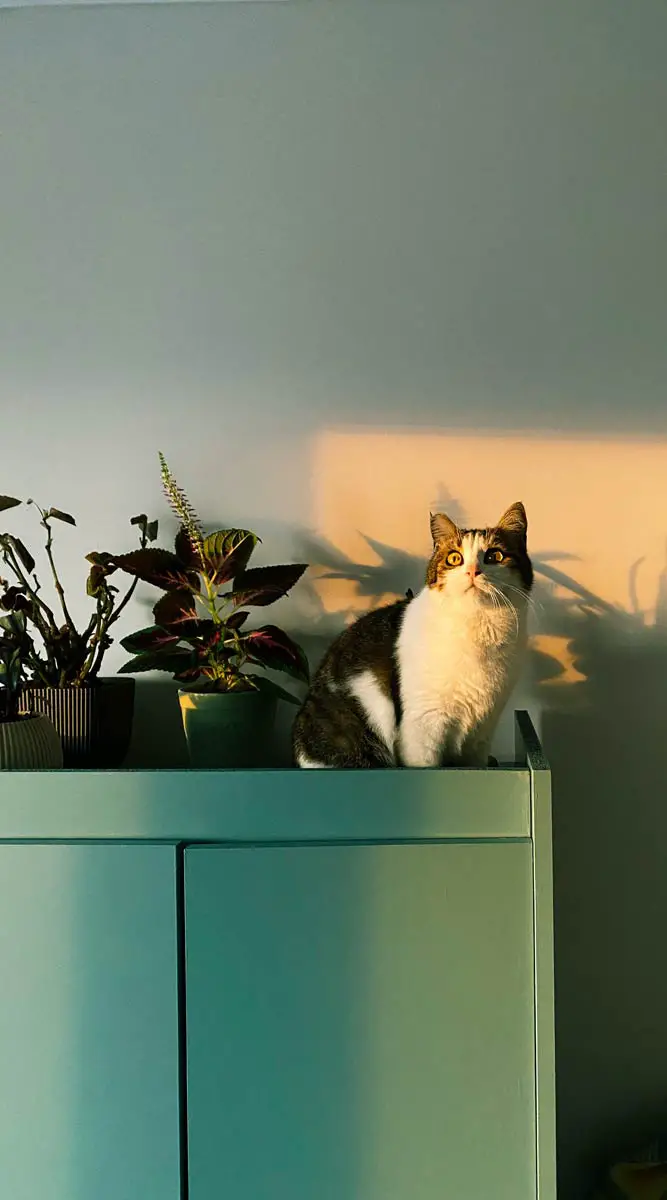Cat pregnancy is a fascinating and exciting time, but it can also be a bit overwhelming if you’re not prepared.
In this article, we will give you everything you need to know about cat pregnancy, from the signs of pregnancy to caring for your pregnant cat.
1. Signs of Pregnancy
1.1 Behavioral Signs
- Become more affectionate and seek extra attention from their owners or more irritable or display mood swings.
- Changes in her eating habits. Some cats may exhibit an increased appetite, while others may become finicky or have a decreased interest in food. Sudden weight gain is also typical during pregnancy.
- Tend to rest and sleep more than usual.
- Start to display nesting behaviors, such as searching for a quiet, secluded place to give birth.
- Some pregnant cats may exhibit a desire to roam or hide in unusual places.
1.2 Physical Signs
- The abdomen will gradually expand. The enlargement is typically more noticeable towards the later stages of pregnancy.
- Nipples will enlarge and may become more prominent. Additionally, the color of the nipples may darken, which is caused by increased blood flow.
- The vulva may appear slightly swollen or have a pinkish hue. This change is due to hormonal fluctuations during pregnancy.
- Occasional vomiting, especially in the early weeks of pregnancy.
- The mammary glands of a pregnant cat undergo changes in preparation for nursing. They may become larger and feel firmer to the touch.
- Some pregnant cats may exhibit an increased thirst.
- Pregnant cats may have changes in their litter box behavior, such as using it more frequently or avoiding it altogether.
Remember, these signs are not definitive proof of pregnancy, and a veterinary examination is essential for confirmation.
A veterinarian can perform a physical examination, palpation, or recommend diagnostic tests such as ultrasound to determine if your cat is pregnant accurately.

2. How Long Are Cats Pregnant For?
The gestation period for cats is typically around 63 to 66 days (consider 63 days, or nine weeks, as an average period), although it can vary slightly depending on the individual cat.
3. Pregnancy Stages
Understanding the different stages of cat pregnancy is essential to track the progression of the pregnancy and provide appropriate care.
Here are the key stages involved in the journey of cat pregnancy:
3.1 Fertilization
The first stage of cat pregnancy begins with fertilization.
When a female cat mates with a male cat, sperm is introduced into the reproductive tract of the female. The sperm travels up the uterus and fallopian tubes to meet the egg, resulting in fertilization. Then, the fertilized egg implants itself in the uterus lining.
3.2 Embryo Development
After fertilization, the embryo starts to develop.
In the early stages, the embryo undergoes cell division and begins to take shape.
Around 14 to 21 days after fertilization, the embryos become implanted in the uterine lining. At this point, the embryos are small and difficult to detect externally.
3.3 Ongoing Gestation
The gestation period of a pregnant cat typically lasts around 63 to 66 days.
Here are the milestones that occur during ongoing gestation:
- Week 3: By this stage, the embryos have developed into blastocysts, consisting of a cluster of cells. The organs and body structures start to form.
- Week 4: The embryos develop limb buds, and their sex organs begin to differentiate. It is possible to confirm pregnancy through ultrasound or palpation by a veterinarian.
- Week 5: The kittens’ skeletons begin to ossify, and their facial features become more defined. The mother cat’s abdomen may start to enlarge.
- Week 6: The kittens’ fur starts to develop, and their claws begin to form. The mother cat’s nipples may become more prominent.
- Week 7: The kittens’ bodies become covered in fur, and their whiskers are visible. The mother cat’s abdomen continues to expand.
- Week 8 to 9: The kittens are fully formed and ready for birth. The mother cat may start exhibiting nesting behaviors and preparing for labor.
3.4 Labor
Labor is the final stage of cat pregnancy when the mother cat gives birth to her kittens. Signs of impending labor include restlessness, nesting behaviors, and a decrease in appetite. Labor typically consists of three stages:
Stage 1: The mother cat may show signs of discomfort, pacing, and seeking a secluded spot for labor. This stage can last for several hours, during which the cervix dilates.
Stage 2: Active labor begins with the mother cat experiencing contractions.
Each kitten is born within intervals of time. The mother cat will typically exhibit strong contractions, and each kitten is delivered in a protective sac called the amniotic sac. The mother cat will instinctively break the sac and clean the newborn kitten by licking it to stimulate breathing and remove the amniotic fluid.
The interval between each kitten’s birth can vary, ranging from a few minutes to an hour or more.
Stage 3: After all the kittens are born, the mother cat may continue to have mild contractions to expel the placentas. Each kitten is usually accompanied by its own placenta, which is essential for the nourishment and development of the kittens during pregnancy.
After the completion of labor, the mother cat will focus on caring for her newborn kittens. She will continue to clean them, stimulate their elimination, and nurse them for milk. It’s important to provide a calm and quiet environment for the mother and her kittens during this bonding period.

4. Pregnant Cat Care
4.1 Health
Veterinary Care
And regular veterinary check-ups are important during cat pregnancy. The veterinarian will monitor the mother cat’s overall health, track the progress of the pregnancy, and address any potential issues or complications.
It is recommended to schedule an initial visit early in the pregnancy to establish a baseline, and follow-up visits as advised by the veterinarian.
Vaccinations
Before breeding, make sure the mother cat is up-to-date on her vaccinations. Vaccinations provide immunity not only to the mother cat but also to the kittens.
However, during pregnancy, it is generally recommended to avoid administering vaccines unless deemed necessary by the veterinarian.
Consult with your veterinarian regarding vaccination protocols specific to your cat’s situation.
Parasite Control
Effective parasite control is essential for the health of the pregnant cat and the developing kittens.
Parasites like fleas, ticks, and intestinal worms can pose risks to their well-being.
Consult with your veterinarian to establish a safe and appropriate parasite prevention plan for your pregnant cat, considering the stage of pregnancy and the safety of the chosen products.
4.2 Nutrition & Diet
During pregnancy, your cat will need a high-quality, nutrient-rich diet to support the growth of her kittens.
- High-Quality Cat Food:
Choose high-quality cat food that is specifically formulated for pregnant or nursing cats. These diets provide the necessary nutrients, including higher levels of protein, calories, and essential vitamins and minerals. - Increased Caloric Intake:
As the pregnancy progresses, the mother cat’s caloric needs will increase. Gradually transition her to a higher-calorie diet and follow feeding guidelines provided by the veterinarian or the cat food manufacturer. - Frequent, Small Meals:
Offer smaller meals more frequently throughout the day to accommodate the mother cat’s growing nutritional requirements. This can help prevent her from becoming overly full or uncomfortable. - Hydration:
Ensure that the pregnant cat has access to fresh and clean water at all times.
Adequate hydration is essential for her overall health and the production of milk for the kittens. - Monitoring Weight Gain:
Regularly monitor the mother cat’s weight throughout the pregnancy. Weight gain is expected but should be gradual and within the recommended range.
Sudden or excessive weight gain could indicate underlying health issues, so consult with a veterinarian if there are any concerns. - Supplements:
Discuss with your veterinarian if additional supplementation, such as prenatal vitamins or specific supplements like omega-3 fatty acids, is necessary for your pregnant cat. Avoid giving any supplements without veterinary guidance, as some can be harmful during pregnancy. - Feeding Transition After Birth:
Once the kittens are born, the mother cat’s nutritional needs will change again.
Consult with the veterinarian regarding a suitable postnatal diet to support her recovery and milk production for nursing the kittens.
4.3 Environmental Factors
Create a safe and stress-free environment for the pregnant cat.
Minimize exposure to potential hazards, such as toxic substances, loud noises, or stressful situations.
Provide a quiet and comfortable space for her to rest and prepare for the birth of the kittens.
4.4 Exercise and Mental Stimulation
Gentle exercises, such as short walks or supervised playtime, can help maintain the pregnant cat’s physical health and prevent excessive weight gain.
Mental stimulation, such as providing toys or puzzles, can help keep the cat’s mind active and prevent boredom.
5. Kitten Care & Nutrition
Read more at:
Kitten Development: The First Eight Weeks of Life
Kitten Vaccinations: Everything You Need to Know
6. Overview
Cat pregnancy can be an exciting and rewarding experience, but it’s important to be prepared for all aspects of the process.
By knowing the signs of pregnancy, caring for your pregnant cat, and being prepared for the birth, you can help ensure that your cat has a healthy and successful pregnancy.
Remember to always consult with your vet if you have any questions or concerns about your cat’s pregnancy.











